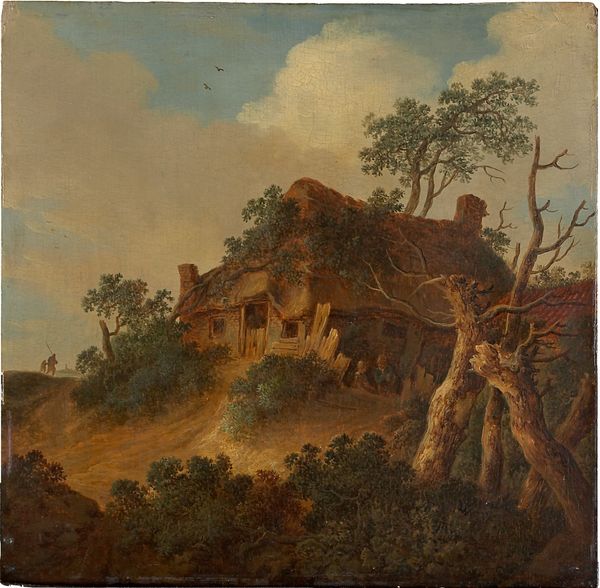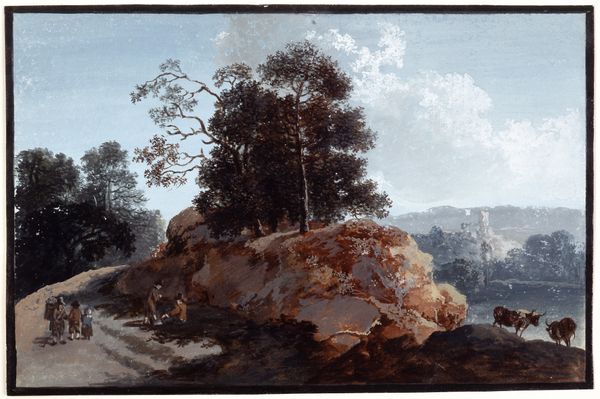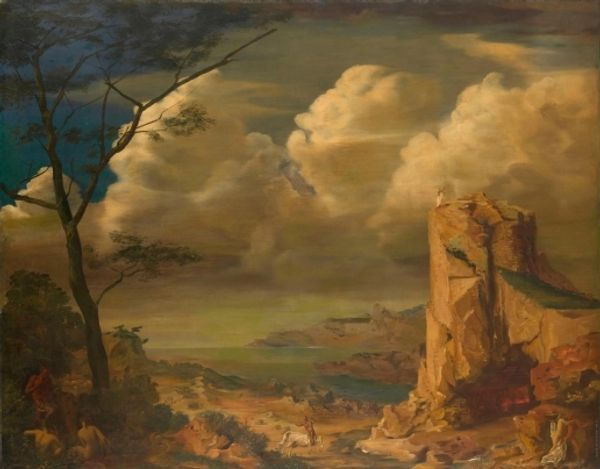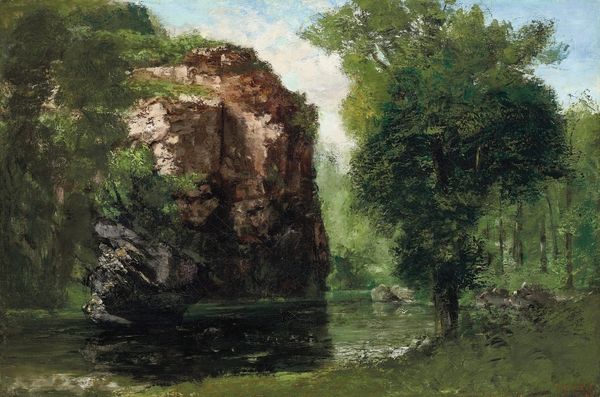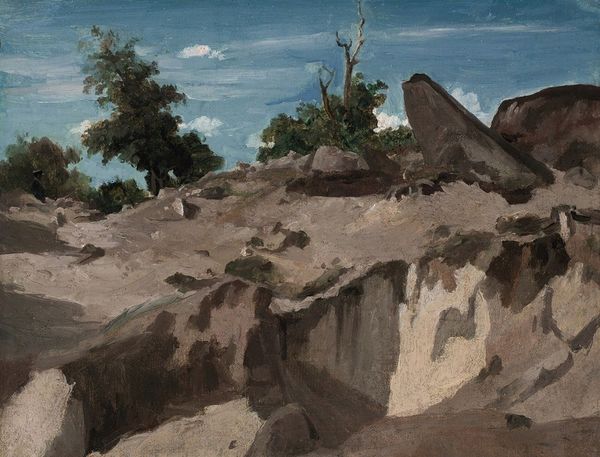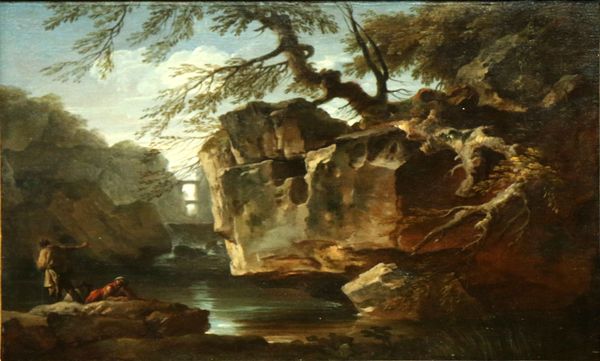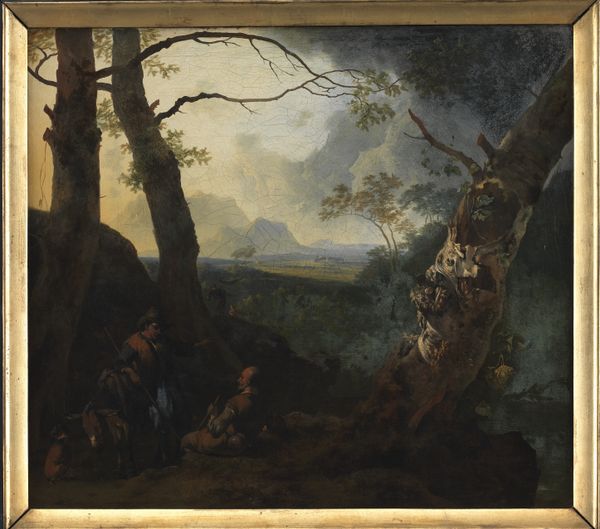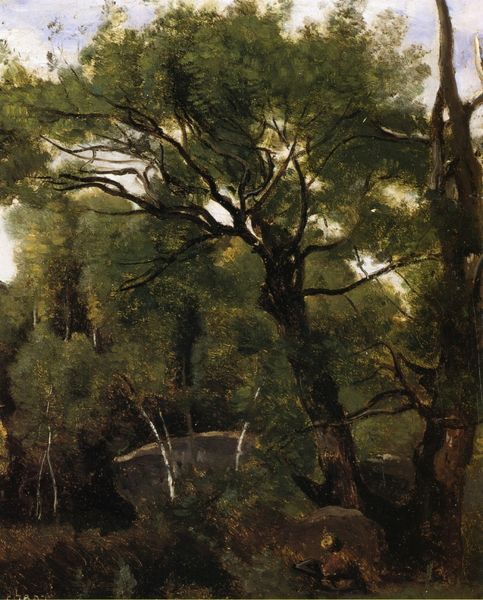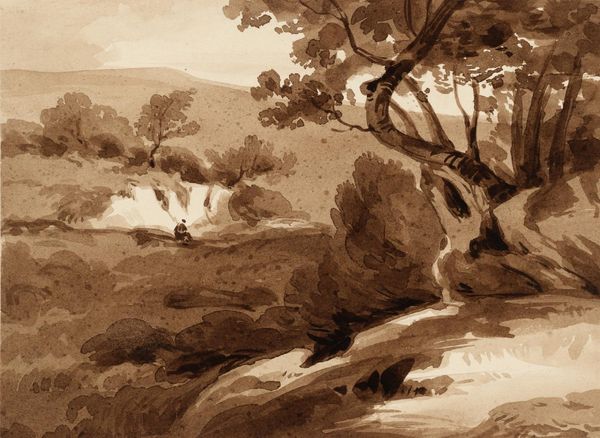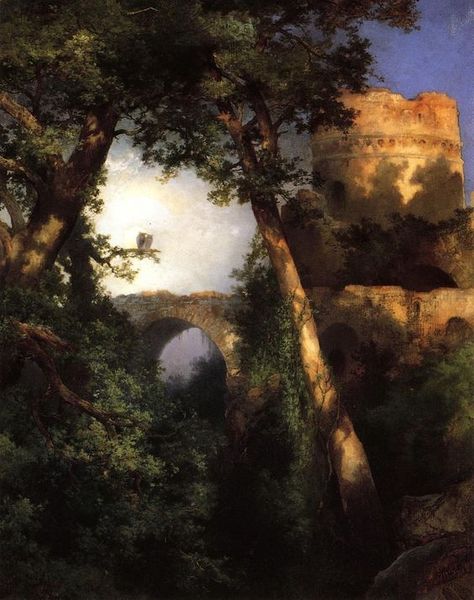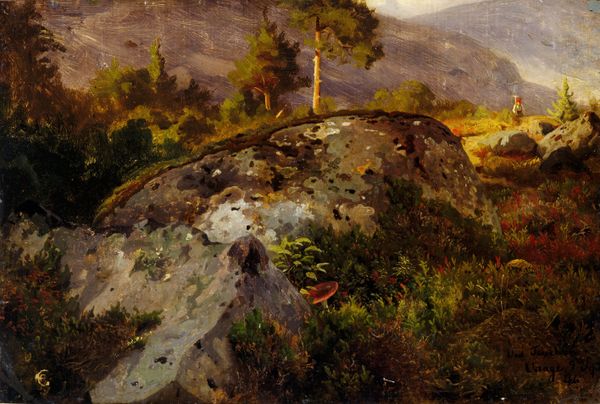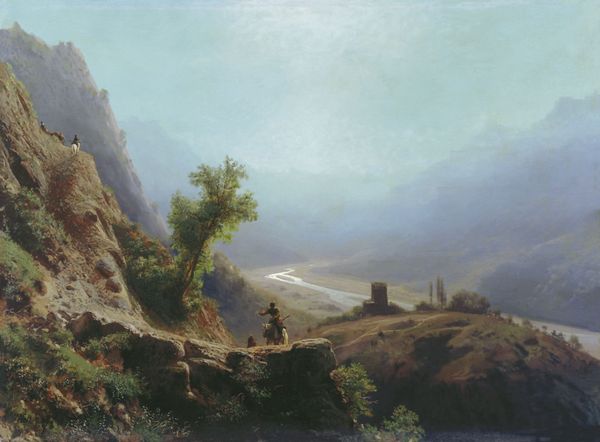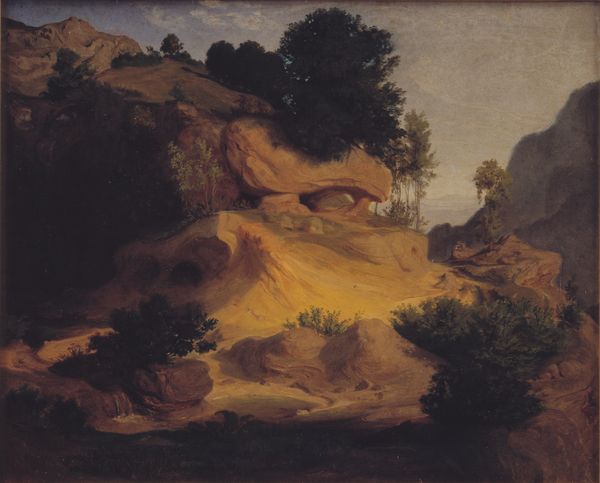
Copyright: Public domain
Here we see a “Landscape with Ruins” by Pierre-Henri de Valenciennes at LACMA, painted with oil on paper. Notice how the composition divides into distinct horizontal registers: the dark, weighty earth, the overgrown ruin, and the airy sky. Valenciennes, interested in the structure of landscapes, evokes an emotional response by contrasting the ruin's stability with nature's reclaiming power. The brushwork varies – tight and controlled in the architecture, loose and gestural in the foliage – reflecting a dynamic interplay. The ruin, a sign of history and human endeavor, is being overtaken, a symbol of time's relentless march and nature's ultimate dominance. Consider how Valenciennes uses formal elements, such as the contrast between the sharp angles of the stonework and the soft curves of the vegetation, to generate tension. This tension embodies larger philosophical questions about humanity’s place in the natural world. The painting invites us to see ruins not just as remnants of the past but as active sites of transformation.
Comments
No comments
Be the first to comment and join the conversation on the ultimate creative platform.
